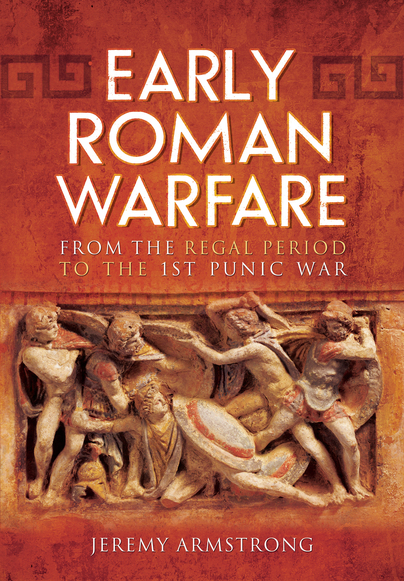Interview with Jeremy Armstrong

With lockdown in place, I had some time to figure out what other content would be useful for site visitors. With my relationship with Pen and Sword Books as a reviewer, I suggested I could email interview a number of their authors.
Here is the first, Jeremy Armstrong.
Tell us a little about yourself.
I am currently an Associate Professor of Ancient History at the University of Auckland, New Zealand. I received my BA from the University of New Mexico, USA, and my MLitt and PhD from the University of St Andrews, Scotland. My research is primarily focused on archaic central Italy, and specifically early Roman warfare. In addition to the Pen & Sword volume, I am the author of War and Society in Early Rome: From Warlords to Generals (Cambridge University Press, 2016) and the editor of a several volumes, including Rituals of Triumph (Brill, 2013), Circum Mare: Themes in Ancient Warfare (Brill, 2016), and Romans at War (Routledge, 2020).
What made you focus on the period of history you have written about?
Early Rome is a fascinating period as, despite its obvious importance for the Romans and being the focus of several major ancient texts (most notably the histories of Livy and Dionysius of Halicarnassus), we know very little about it for certain. The Romans only started writing narrative histories of their own society c. 200 BC, meaning that the historical narrative for the period before that point is subject to a rather different of rules, being largely the product of Rome’s oral tradition (and so should be taken with a rather large ‘pinch of salt’). Additionally, early Rome is an area where the archaeological record is growing exponentially every year, so we are constantly revising our models – often dramatically. So it’s an exciting period to work on, where there is a lot of activity in recent years, and where there are opportunities to really advance our understanding of Roman history substantially.
Where do you do most of your writing?
In my office at the University of Auckland.
Share one strange fact you found while researching your work?
This is difficult to answer, as I can’t think of anything particularly ‘strange’ I have come across recently – except, perhaps, what appear to be ‘strange’ omissions. For instance, why do the Romans seem to ignore the likely ubiquitous presence of mercenaries in Italy during the early and middle Republic? I have also been fascinated by the recent ‘rediscovery’ of the hypogeum near the Lapis Niger in the Roman Forum. We have actually known about it for over 100 years (and it is almost certainly NOT the ‘grave of Romulus’), but it is a rather unusual addition to the Forum in the sixth century BC and I look forward to seeing if modern techniques of analysis can extract any more useful data about it.
What is your favourite resource for carrying out research?
This is also quite difficult to answer, as it really depends on what I am working on. Lately, however, I have been using Broughton’s Magistrates of the Roman Republic extensively. It is an excellent summary of the basic events and figures for each year, with ancient references, and an incredibly useful tool.
What are you working on next?
I am currently in the middle of a major research project, funded by the Royal Society of New Zealand Marsden Fund, exploring the production of bronze military equipment in Italy from c. 900 to 200 BCE. This has included traditional, library-based research, but also detailed studies (using pXRF, laser scanning, photogrammetry, etc.) of pieces of ancient equipment held in major national collections in Italy, as well as using experimental archaeology to recreate items. We look forward to publishing the initial analyses coming out of this project in the next year or so.
Where can people find about more about your work? Are you active on social media, publish your own website for example?
The two best websites for more information would be my University of Auckland profile http://www.arts.auckland.ac.nz/people/jarm034 and my Academia.edu.
Books
While copious amounts have been written about the Roman army, most study has focussed on the later Republic or the Imperial period when the legionary system was already well-developed. Here Dr. Jeremy Armstrong traces the development of Rome’s military might from its earliest discernible origins down to the First Punic War.
He shows how her armies evolved from ad hoc forces of warriors organized along clan lines to the sophisticated organization of the legions that went on to dominate all of Italy. Reassessing both the literary sources and the latest archaeological evidence to provide a fresh analysis of Roman military organization, equipment, tactics, and strategy, he shows how Rome’s military apparatus adapted to meet the changing strategic needs of new enemies and broader ambitions.
< BACK